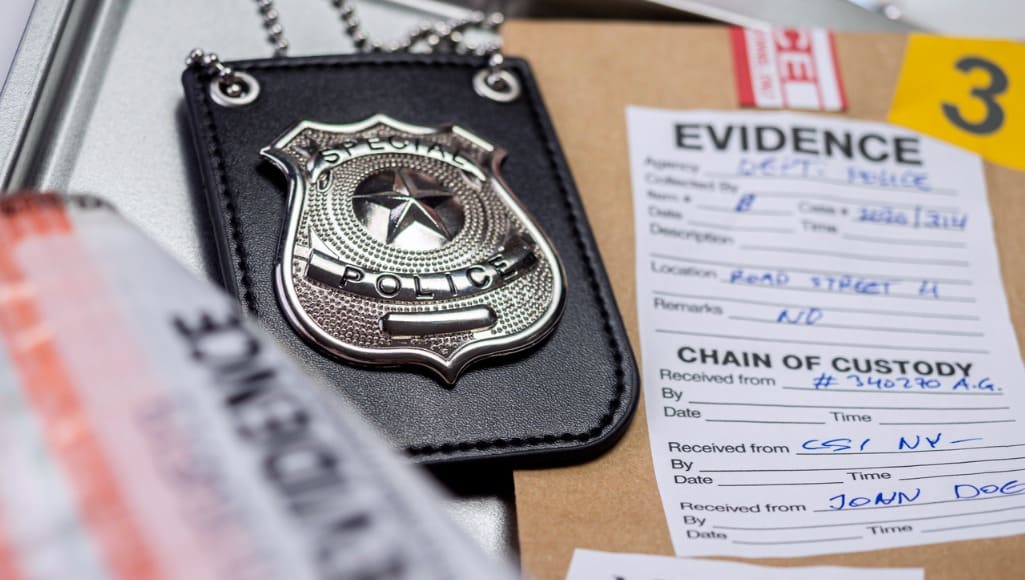What is a search warrant?
A search warrant is a legal document granted by a judge or magistrate, authorizing law enforcement officials to enter and search a place, person, or vehicle to seize evidence of illegal activity. A search warrant helps to ensure that an individual’s Fourth Amendment rights are not violated.
“The Constitution, through the Fourth Amendment, protects people from unreasonable searches and seizures by the government. The Fourth Amendment, however, is not a guarantee against all searches and seizures, but only those that are deemed unreasonable under the law.”
– United States Courts
In order to obtain a search warrant, an officer must first seek permission from a judge based on probable cause and the belief that criminal activity has occurred or is occurring. A search warrant must be specific to the place or person the officer is requesting to search, according to where the officer thinks they will find evidence of illegal activity. Additionally, a warrant is valid only for a specified time period, which is typically within 14 days of the warrant being issued. Read on for additional information and tips on writing a search warrant.
What is the process for obtaining a search warrant?
When it comes time to secure a search warrant, an officer (the affiant) must complete an affidavit to submit to a judge, swearing that the information provided is true. Within the affidavit, the affiant must identify themselves with information such as current rank and law enforcement experience. The paperwork should include the law(s) suspected to have been violated, a detailed description of the person or place to be searched, a description of what items are anticipated to be found during the search, and a summary from the officer indicating background information about the investigation and probable cause.
Probable cause specifies the credible facts and circumstances that suggest a crime has been committed and evidence will be found during the search. Without probable cause, a judge will not order a search warrant.

5 Tips for writing a search warrant
Search warrant applications not only tend to be tedious and time consuming, but also challenging for officers who are new to the process. Here are five tips for writing a search warrant that officers should consider when it comes time to put pen to paper:
1. Follow a Template
Number and format the search warrant template according to the court’s specifications. Following such a template will ensure that each piece of information the judge is looking for is included. At a minimum, the template should include:
- The affiant’s name, title and authority within the jurisdiction, and experience/training relevant to the type of crime listed in the warrant.
- All statute violations involved in the investigation. Define the law(s) that have been violated.
- A statement identifying the purpose of the search warrant.
- An overview of the investigation, including as much detail as possible to support probable cause.
- A statement of probable cause and supporting facts about each individual piece of evidence being searched for.
- A strong conclusion to “connect the dots” (see #4 below).
Additional information may be required depending on the state or jurisdiction in which the search warrant is being requested.
2. Details Matter
Describe the person or place to be searched using as many specific details as possible. For instance, include the street address and physical description of a property or the make, model, VIN, and plate number of a vehicle. Specifically outline the area that is being requested to search, as well as the object(s) that are being searched for. Keep in mind that a home search does not automatically include other buildings on the property (sheds, cabins, etc.) and vice versa, unless the other buildings are specified on the search warrant.
Detailed descriptions of what will be seized, such as weapons, electronic devices, illegal drugs, or paper files, should also be included. Each item being searched for should be listed and described individually, when possible, although certain generalized terms, such as “tax ledgers” or “controlled substances” might apply in some cases. Your authority to search closed containers will depend upon the size of the objects you intend to seize. For example, if you are searching for a rifle or shotgun, the Court will likely deem your search of a medicine cabinet to be unreasonable, and it will disallow any other evidence you find in that cabinet.
3. Attach Photos
Keep in mind that anyone who is reading the affidavit should be able to identify what is being described, whether or not they have background information about the case. Adding photos of the property, vehicle, or person to be searched adds tremendous clarity for the judge, speeding up the process of warrant approval.
4. Connect the Dots
While the affidavit should describe how the investigation began, the nature of the crime, and how the crime was committed, simply listing this information is not enough. Be clear on how each detail connects to the bigger picture and the specific evidence being searched for. Tie together each piece of the affidavit to explain exactly why the search warrant is necessitated.
5. Seek Review
Request that a supervisor or other experienced officer proof-read the search warrant paperwork and affidavit prior to submitting to a judge. There may even be a prosecutor in the jurisdiction willing to review the affidavit. This step confirms that the search warrant is lawful and will later withstand courtroom scrutiny.

How can OSCR360 help law enforcement officers obtain and conduct a search warrant?
Photography is a critical component of both acquiring a search warrant and conducting the search itself. Comprehensive, high-quality photos help ensure the quality and accuracy of the investigation – and the results can make a huge difference later in the courtroom. Though capturing, organizing, storing and presenting traditional photos can be painstaking, OSCR360 simplifies and enhances the entire search warrant process.
Attach OSCR360 photographs to the search warrant affidavit.
“A picture is worth a thousand words” has never been more accurate. Attaching OSCR360 photographs that were captured at the crime scene to a search warrant affidavit shows the judge exactly what is being described in writing so that there is no room for misinterpretation. A single OSCR360 photo captures an entire room, floor to ceiling, in 360-degrees. Any notable areas and items discovered at the crime scene can be noted as Points of Interest (POIs) within the 360-degree photos. OSCR360 photos provide a high level of clarity, expediting the approval process and speeding up the entire investigation.
Document the search warrant location prior to the search.
OSCR360 photographs the original condition of the property prior to conducting your search. In a fraction of the time it would take to thoroughly capture the scene using traditional photography, OSCR360 shows exactly what law enforcement saw when they arrived at the search location. OSCR360 efficiently and thoroughly captures outdoor environments and confined spaces, such as vehicle interiors, closets, attics and powder rooms, as well.
Provide proof of timelines and location.
OSCR360 timestamps each photo and identifies the location the where the 360 image was captured. Later, in the courtroom, the timestamps verify that the search was conducted during the timeframe specified on the search warrant and the locational information verifies that the search was held at the location indicated on the search warrant.
Organize evidence found during the search.
Any evidence encountered during the search should be thoroughly photographed, and maintaining the chain of custody is of utmost importance.
Each OSCR360 image serves as a digital “storage container” and can organize any close-up evidence photos. Within the OSCR360 software, each DSLR evidence photo can be attached to the exact location in which it was found using OSCR’s “Point of Interest” (POI) feature. For instance, the photographs of a weapon found inside the top drawer of a dresser would be pinned as a POI in the overall OSCR images of the bedroom in which the dresser was located.
Document the search warrant location when your search concludes.
After a search has been completed, use OSCR360 to once again photograph the condition of the property before leaving. This simple step illustrates that the property was left in comparable condition to the condition in which it was found. This provides a layer of accountability and security for officers, ensuring that nothing was damaged during the search.
Tie the investigation together in court.
When an investigation results in pressed charges and prosecution, OSCR360 ties each piece of evidence together in an organized, concise virtual walkthrough. If officers are called to the stand, they can show the jury exactly what they discovered while executing the search warrant. Whether the evidence was found at one scene or multiple scenes across multiple counties, OSCR360 allows the courtroom audience to see each piece of the puzzle from the perspective of an investigator at the scene.
Have your own tips for writing a search warrant? Get in touch with the L-Tron team by emailing info@L-Tron.com or via social media @Ltroncorp.
Interested in more information on OSCR360 or seeing how agencies are using the system on search warrants, major crimes and more? Check out the resources below: